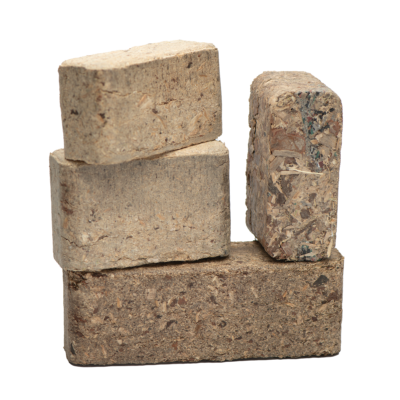By Layla Adair, Samantha Allen, Marcus Morgan and Tacara Skipper
Graphyte is a Bill Gates-backed startup that has developed an innovative and cost-effective method for carbon sequestration. Aiming to address the critical issue of carbon emissions and climate change.
The company’s unique approach, known as “carbon casting,” involves gathering crop waste or other carbon-rich biomass, drying it, and compressing it into large blocks.
These blocks are then sealed with a special polymer and buried underground, with sensors monitoring their integrity to ensure long-term carbon storage.
Graphyte’s CEO and co-founder Barclay Rogers says that their process is distinct from other carbon capture methods as it does not require large amounts of energy and avoids releasing significant amounts of carbon during processing.
This efficiency allows Graphyte to claim a cost of carbon sequestration at around $100 per ton, a significant reduction compared to the current average cost of $600 per ton.
The startup’s approach is backed by Breakthrough Energy Ventures, a climate-oriented venture capital firm founded by Bill Gates.
A Breakthrough Energy Ventures partner Chris Rivest emphasized the importance of carbon removal.
“We’ve bet the future of our planet on our ability to remove CO2 from the air,” he said. “Pretty much every IPCC scenario that has a livable planet involves us pulling like 5 to 10 gigatons of CO2 out of the air by mid- to late-century.”
Graphyte is preparing to launch its first pilot plant in Pine Bluff, Arkansas.
The initial capacity of this plant is expected to be around 5,000 tons of carbon per year, with plans to expand to 50,000 tons per year by 2024.
The company is also exploring suitable locations for the underground storage of these carbon blocks. Their method does not require specific geological conditions for storage, unlike other carbon storage techniques.
Graphyte stands out in the field of carbon capture and sequestration with its innovative, energy-efficient, and cost-effective approach. The company’s progress and future developments could play a crucial role in mitigating climate change by affordably reducing atmospheric carbon levels.
CO2 alternatives are costly
Alternative methods to reducing carbon in the atmosphere have proven to be too expensive to stay continuous and make a meaningful impact on our environment. So, could carbon bricks prove to be an alternative, cost wise?
Each brick is made up of crushed plants, wood chips, and rice hulls tightly compacted together, an inexpensive resource derived as excess from other projects.
Carbon vacuum researchers were given $1.2 billion dollars to solve the issue. And yet today, we stand at 419.55 ppm on the carbon scale. That’s a 0.44% increase than last year, according to CO2 Earth, and it’s more than last month levels of carbon.
Each ton of CO2 can be stored for about $100 with these bricks. This is way cheaper than any alternative to the carbon issue that we’ve ever seen before, and it seems to be the most efficient. For example, other methods of CO2 storage such as giant fan like machines, cost around $600 to $1,200 to remove a single ton.
Chris Rivest, a venture partner with Breaththrough Energy, told the Washington Post, “Pretty much every IPCC scenario that has a livable planet involves us pulling like 5 to 10 gigatons of CO2 out of the air by mid- to late-century.” That amount is only about 12 to 25 percent of what is emitted worldwide every year. So, is that possible if this brick is affordable?
As of right now, the bricks haven’t made an impact yet. The idea was thrown around, and the simplicity has people skeptical.
The world of carbon capture
Climate change has been a big issue for decades not only in our nation, but globally. Over time there have been attempts to remedy this problem such as planting trees to pull the carbon dioxide from the air, creating CO2 sucking machines to reverse the problems, but none seem to work.
However, a new idea has been created to subtly pull the CO2 from the air. Graphyte announced that they have created a method to absorb CO2 by creating blocks made of wood chips and rice hulls and turning it into blocks of dried-up plant matter.
“Carbon casting lets nature efficiently do the work of capturing CO2, then leverages engineering Techniques to store it permanently. It’s a solution that can be done anywhere, that will change the market, and more importantly, that will help save the planet,” said Barclay Rogers, founder and CEO of Graphyte.
Carbon levels continue rising in atmosphere
Carbon dioxide (CO2) levels in the atmosphere are at an all time high. The levels are higher than they have been in the past 400,000 years, starting around 200 parts per million (ppm) in the ice ages and fluctuating to 280 (ppm) during the warmer interglacial periods, have now surpassed 400 ppm as of November 2023.
Specifically, the last CO2 Earth update, conducted by the National Oceanic Atmospheric Administration (NOAA), was documented at 419.17 ppm. A 0.44% (1.82 ppm) increase from last year.
“Every year we see carbon dioxide levels in our atmosphere increase as a direct result of human activity,” said NOAA Administrator Rick Spinrad. “Every year, we see the impacts of climate change in the heat waves, droughts, flooding, wildfires and storms happening all around us. While we will have to adapt to the climate impacts we cannot avoid, we must expend every effort to slash carbon pollution and safeguard this planet and the life that calls it home.”
Humans have single handedly caused the dramatic increased of CO2 levels. CO2 in the atmosphere has been changing the balance of the climate system through burning fossil fuels for transportation and electrical generation, the rapid expansion of farming, infrastructure developments, deforestation and industrial activities. Even just breathing and digesting food has contributed to the changes in Earth’s life cycle.

